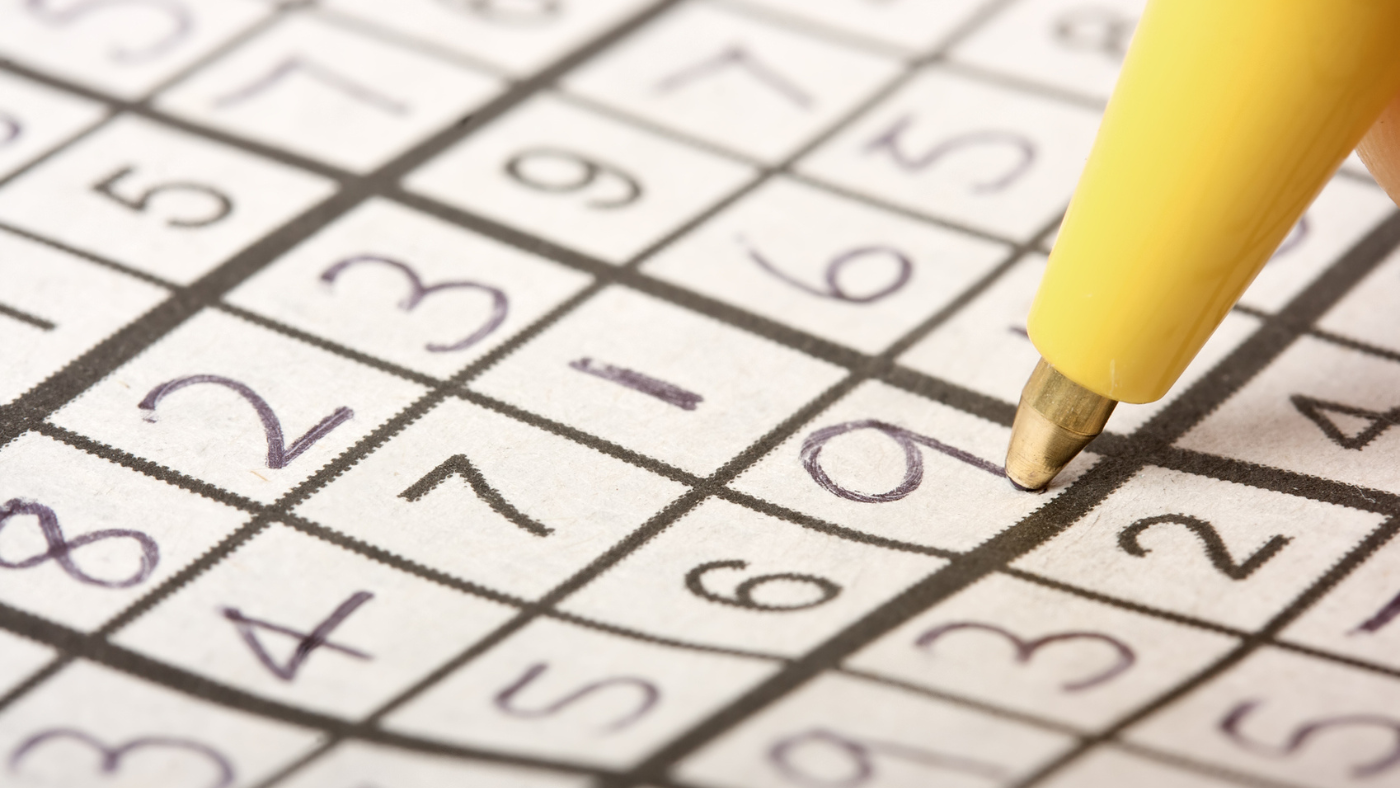6 dangerous volcanoes that could shut down the world
Blast to the future

Hawaii’s Kilauea volcano sent lava soaring 400 feet into the air last week, resuming an intermittent eruption that has been ongoing for the past year. This is the 37th time the volcano has erupted since last December. Kilauea is one of the most active volcanoes on Earth and one of six active volcanoes in Hawaii alone.
While there was no harm done to homes or businesses this time, other volcanoes across the planet have the potential to cause more potent damage. Climate change can also increase the risk of a volcanic eruption; warming temperatures melt glaciers, which "could upset the volcanoes below, causing them to erupt more frequently, more violently or both," said The Economist. And "people need not live nearby to be affected."
Scientists have been monitoring several supervolcanoes that have the potential to cause widespread or even apocalyptic destruction. Here are six of them.
The Week
Escape your echo chamber. Get the facts behind the news, plus analysis from multiple perspectives.

Sign up for The Week's Free Newsletters
From our morning news briefing to a weekly Good News Newsletter, get the best of The Week delivered directly to your inbox.
From our morning news briefing to a weekly Good News Newsletter, get the best of The Week delivered directly to your inbox.
1. Campi Flegrei (Italy)
Last eruption: 1538
Effects of a major eruption: Located just east of Naples, Campi Flegrei is not just a single volcano, but a volcanic system containing 24 craters. If it were to erupt, it could "cover Naples and surrounding areas in ash, trigger earthquakes and landslides throughout southern Italy as well as cause widespread air pollution and acid rain," said Wanted in Rome. Campi Flegrei's largest eruption occurred 36,000 years ago and "pumped ash across the Mediterranean region and spawned a bitter volcanic winter across eastern Europe, with temperatures reduced by up to 9°C (16.2°F)," said the BBC.
Likelihood: Camp Flegrei has been stirring for over a year now. In 2024, scientists "logged some 2,500 earthquakes caused by this volcano in a single month," said NPR. Now the "tremors are intensifying in magnitude" and "June saw an unprecedented 4.6-magnitude earthquake — enough to crack walls and send people fleeing from their homes." Despite this, experts say that an eruption is "not necessarily imminent," but they "cannot know for sure." Camp Flegrei is also not the only dangerous volcano in Italy, as the country is known to be a hotbed for volcanic activity.
2. Mt. Merapi (Indonesia)
Last eruption: October 2025
Effects of major eruption: Indonesia's most active volcano has caused hundreds of deaths over the years. Merapi is a stratovolcano, meaning the magma is "charged with gas," said geologist Susan W. Kieffer in 2006. This creates a "sticky, hot, gas-rich plug known as a volcanic dome," which can "build up higher and higher, and then suddenly collapse under its own weight." As a result, dangerous mudflows can form.
Likelihood: Merapi has had eruptions every few years, and it will likely continue to do so.
3.. Cumbre Vieja (La Palma, Canary Islands)
Last eruption: 2021
Effects of a major eruption: When Cumbre Vieja last erupted in 2021, "lava poured out of the volcanic ridge, and flowed to the sea, engulfing 3000+ dwellings, said NASA's Jet Propulsion Laboratory. While thousands of people were evacuated, the damage from the eruption was not as severe as it could have been. Scientists had warned that a major eruption of Cumbre Vieja could cause the entire western flank of the volcano to fall into the sea, creating a "mega-tsunami" wherein "waves hundreds of meters high" would radiate "out into the Atlantic," the New Zealand Herald said. However, subsequent studies of the "potential consequences of a collapse at Cumbre Vieja have significantly downplayed the risk" of such an outcome. In a 2021 report for the U.S. Geological Survey, the Hawaiian Volcano Observatory said that the theory of an eruption-prompted mega-tsunami "does not hold up to rigorous examination."
Likelihood: Scientists say the "year to year probability" of a major eruption is low, but preparations should be taken anyway given the potentially cataclysmic damage.
4. Mount St. Helens (Washington, United States)
Last eruption: 1980
Effects of major eruption: Mount St. Helens' eruption in May 1980 resulted in 57 deaths and caused the "largest landslide in recorded history," said NASA. In addition, "hot pressurized magma erupted, and the ash plume reached a towering height of 80,000 feet (15 miles, 24 km), before blanketing the surrounding region," said EarthSky. Everything within approximately 230 square miles was destroyed and required extensive recovery. "In the decades since the eruption, Mt. St. Helens has given scientists an unprecedented opportunity to witness the intricate steps through which life reclaims a devastated landscape," NASA added.
Likelihood: Plumes of ash have been seen around Mount St. Helens, but experts say that it is just ash from the 1980 eruption. As of now, the ash is "not a sign of renewed volcanic activity," said the U.S. Geological Survey. The volcano’s activity "remains at normal, background levels."
5. Popocatépetl (Mexico)
Last eruption: Ongoing since the early 2000s
Effects of a major eruption: The third-tallest active volcano in the Northern Hemisphere, Popocatépetl is only 40 miles west of Mexico City, whose metropolitan area has an estimated 22 million inhabitants, and just 30 miles east of Puebla, a city of around six million. A large eruption could send "a city-sized cloud of ash 20 centimeters thick" to "descend upon the buildings of Mexico City," Pacific Standard said. The deadly cloud would then "clog Mexico City's drainage lines, poisoning its water supplies and ceasing electricity transmission via short-circuiting," and the devastation would be accompanied by "1,000-degree lahars and pyroclastic flows" that would reach most of the towns in the immediate area.
Likelihood: After an 80-year dormant period, Popocatépetl has had recurring seismic activity for years, including as recently as November 2025. The eruptions stayed at a "Yellow Alert - Phase 2 (level 4 on a 7-level scale)," said Volcano Discovery.
6. Yellowstone Supervolcano (Wyoming, United States)
Last eruption: 640,000 years ago
Effects of a major eruption: When the Yellowstone Caldera, or "supervolcano," in Yellowstone National Park erupts again, "its effects would be worldwide," the U.S. Geological Survey said. In the U.S., the closest states to Yellowstone, including Montana, Idaho and Wyoming, could be "affected by destructive pyroclastic flows, which are a mix of lava blocks, pumice, ash and volcanic gas that flows around a volcano after an eruption," said The Hill. "Much of the rest of the country could be blanketed in falling volcanic ash — in some places, it could be more than three feet deep." Globally, the volcano could also "impact the global climate by emitting ash and gas into the stratosphere, which could block sunlight and lower global temperatures for a few years," Michael Poland from the Yellowstone Volcano Observatory said to LiveScience. The resulting catastrophe could "shut down transportation, collapse buildings, short-out the electrical grid and cause massive agricultural failure," the University of British Columbia's Johan Gilchrist said to CBC Radio.
Likelihood: There is "no reason to think that another super-eruption is in any way imminent," said the BBC. There have been three major blasts from Yellowstone and the "average return period of the three eruptions is 735,000 years."
Devika Rao has worked as a staff writer at The Week since 2022, covering science, the environment, climate and business. She previously worked as a policy associate for a nonprofit organization advocating for environmental action from a business perspective.
-
 Political cartoons for December 7
Political cartoons for December 7Cartoons Sunday’s political cartoons include the Trump-tanic, AI Santa, and the search for a moderate Republican
-
 Trump’s poll collapse: can he stop the slide?
Trump’s poll collapse: can he stop the slide?Talking Point President who promised to ease cost-of-living has found that US economic woes can’t be solved ‘via executive fiat’
-
 Sudoku hard: December 7, 2025
Sudoku hard: December 7, 2025The daily hard sudoku puzzle from The Week
-
 Femicide: Italy’s newest crime
Femicide: Italy’s newest crimeThe Explainer Landmark law to criminalise murder of a woman as an ‘act of hatred’ or ‘subjugation’ but critics say Italy is still deeply patriarchal
-
 Brazil’s Bolsonaro behind bars after appeals run out
Brazil’s Bolsonaro behind bars after appeals run outSpeed Read He will serve 27 years in prison
-
 Americans traveling abroad face renewed criticism in the Trump era
Americans traveling abroad face renewed criticism in the Trump eraThe Explainer Some of Trump’s behavior has Americans being questioned
-
 Claudia Sheinbaum and Mexico’s sexual harassment problem
Claudia Sheinbaum and Mexico’s sexual harassment problemUnder the Radar Claudia Sheinbaum vows action against sexual harassment after viral incident, but machismo and violence against women remains deeply ingrained
-
 Cop30: is the UN climate summit over before it begins?
Cop30: is the UN climate summit over before it begins?Today’s Big Question Trump administration will not send any high-level representatives, while most nations failed to submit updated plans for cutting greenhouse gas emissions
-
 Dozens dead as typhoon slams Philippines
Dozens dead as typhoon slams PhilippinesSpeed Read The storm ravaged the island of Cebu
-
 Nigeria confused by Trump invasion threat
Nigeria confused by Trump invasion threatSpeed Read Trump has claimed the country is persecuting Christians
-
 What is Donald Trump planning in Latin America?
What is Donald Trump planning in Latin America?Today’s Big Question US ramps up feud with Colombia over drug trade, while deploying military in the Caribbean to attack ships and increase tensions with Venezuela


